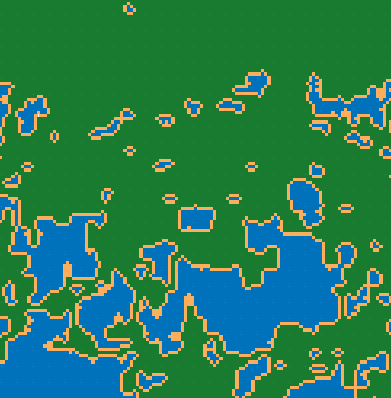T
Thijmen Langendam
Guest
Heyo, so i recently started on random world generation, and this is a small piece of the result so far:

I was wondering if there was an easy way to remove the ponds that are smaller than a certain size. For example, at the top you see a pond of size 3, below that (shaped like a sideways F) that pond is size 6. Is there an easy and non-intensive way of removing all ponds that have less than 10 blocks of water?
Kind regards.

I was wondering if there was an easy way to remove the ponds that are smaller than a certain size. For example, at the top you see a pond of size 3, below that (shaped like a sideways F) that pond is size 6. Is there an easy and non-intensive way of removing all ponds that have less than 10 blocks of water?
Kind regards.
